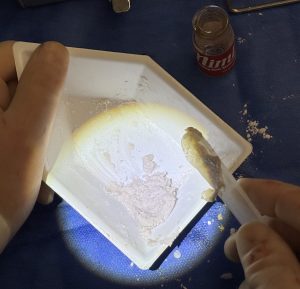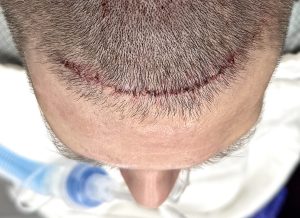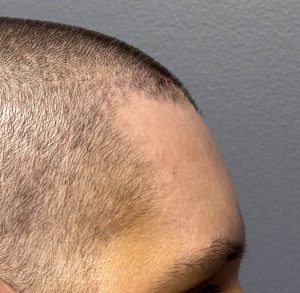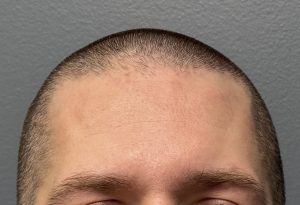Background: The forehead occupies a full one third of the face and is typically perceived as a flat nondescript bony surface. But its surface topography is more complex with potential brow bone prominences, a central glabellar valley, supra brow bone breaks, frontal eminence prominences and lateral temporal lines. All of which can lead to an irregular or bumpy forehead contour. Many of these bony features occur more prominently in men so they have a greater propensity for such forehead contour issues.
The most common male forehead prominence is that of the brow bones. But in forehead contouring we are not talking about major brow bone reduction which requires a bone flap setback. Rather this refers to some mild brow bone prominence or brow bone asymmetry which can be managed by burring reduction. Such prominences are of the medial or frontal sinus portion of the brow bones. How much they can be reduced is based on the thickness of the bone but 2 to 3mms is always possible. With the brow bones a valley between it and the upper forehead (supra brow bone break) is always present but it can also be excessively deep.
Another common forehead prominence, male or female, is that of the frontal eminences or frontal horns. These are upper lateral bony mounds, often paired, that stick out. Often times they are asymmetric with one side more pronounced than the other. With these horn come resultant depressions between them and any prominences that lie below. In men these depressions can become more obvious with the brow bone prominences below.
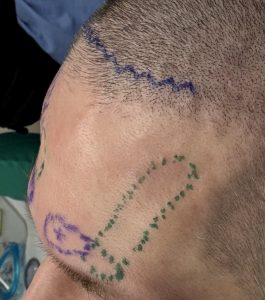
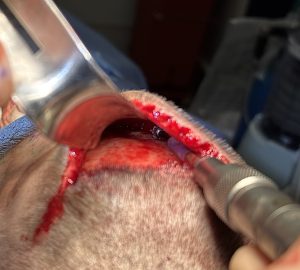

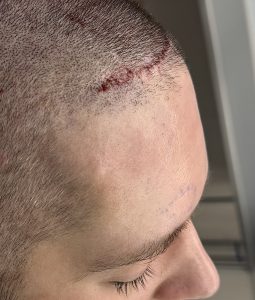

Key Points:
1) The forehead is composed of multiple bony hills and valleys that can make for a non-smooth contour if they are large enough.
2) Brow bone and upper forehead prominences can be reduced by burring using a retro frontal hairline incision.
3) Undesired bony forehead concavities/indentations can be smoothly augmented with hydroxyapatite cement.
Dr. Barry Eppley
World-Renowned Plastic Surgeon






